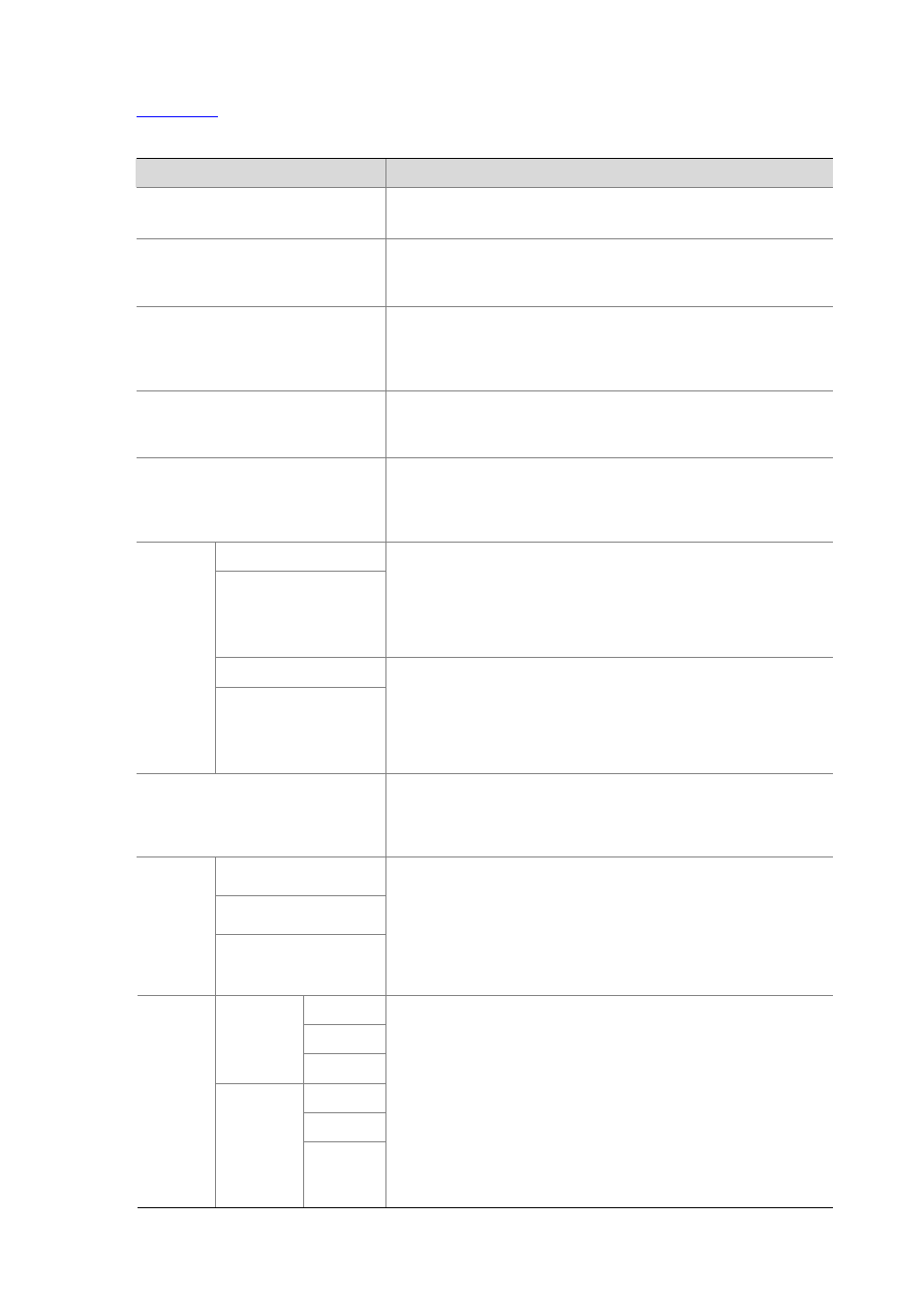H3C Technologies H3C WX6000 Series Access Controllers User Manual
Page 528

45-16
describes the configuration items for creating a rule for an advanced IPv6 ACL.
Table 45-14 Configuration items for an advanced IPv6 ACL rule
Item
Description
Select Access Control List (ACL)
Select the advanced IPv6 ACL for which you want to configure rules.
Available ACLs are advanced IPv6 ACLs that have been configured.
Rule ID
Select the Rule ID check box and type a number for the rule.
If you do not specify the rule number, the system will assign one
automatically.
Operation
Select the operation to be performed for IPv6 packets matching the
rule.
Permit: Allows matched packets to pass.
Deny: Drops matched packets.
Check Fragment
Select this check box to apply the rule to only non-first fragments.
If you do no select this check box, the rule applies to all fragments and
non-fragments.
Check Logging
Select this check box to keep a log of matched IPv6 packets.
A log entry contains the ACL rule number, operation for the matched
packets, protocol that IP carries, source/destination address,
source/destination port number, and number of matched packets.
Source IP Address
Source Prefix
Select the Source IP Address check box and type a source IPv6
address and prefix length.
The IPv6 address must be in a format like X:X::X:X. An IPv6 address
consists of eight 16-bit long fields, each of which is expressed with two
hexadecimal numbers and separated from its neighboring fields by
colon (:).
Destination IP Address
IP
Address
Filter
Destination Prefix
Select the Destination IP Address check box and type a destination
IPv6 address and prefix length.
The IPv6 address must be in a format like X:X::X:X. An IPv6 address
consists of eight 16-bit long fields, each of which is expressed with two
hexadecimal numbers and separated from its neighboring fields by
colon (:).
Protocol
Select the protocol to be carried by IP.
If you select 58 ICMPv6, you can configure the ICMP message type
and code; if you select 6 TCP or 17 UDP, you can configure the TCP or
UDP specific items.
Named ICMPv6 Type
ICMPv6 Type
ICMPv6
Type
ICMPv6 Code
Specify the ICMPv6 message type and code.
These items are available only when you select 58 ICMPv6 from the
Protocol drop-down box.
If you select Other from the Named ICMPv6 Type drop-down box, you
need to type values in the ICMPv6 Type and ICMPv6 Code fields.
Otherwise, the two fields will take the default values, which cannot be
changed.
Operator
Port
Source
To Port
Operator
Port
TCP/UDP
Port
Destination
Port
Select the operators and type the source port numbers and destination
port numbers as required.
These items are available only when you select 6 TCP or 17 UDP from
the Protocol drop-down box.
Different operators have different configuration requirements for the
port number fields:
Not Check: The following port number fields cannot be configured.
Range: The following port number fields must be configured to
define a port range.
Other values: The first port number field must be configured and
the second must not.
